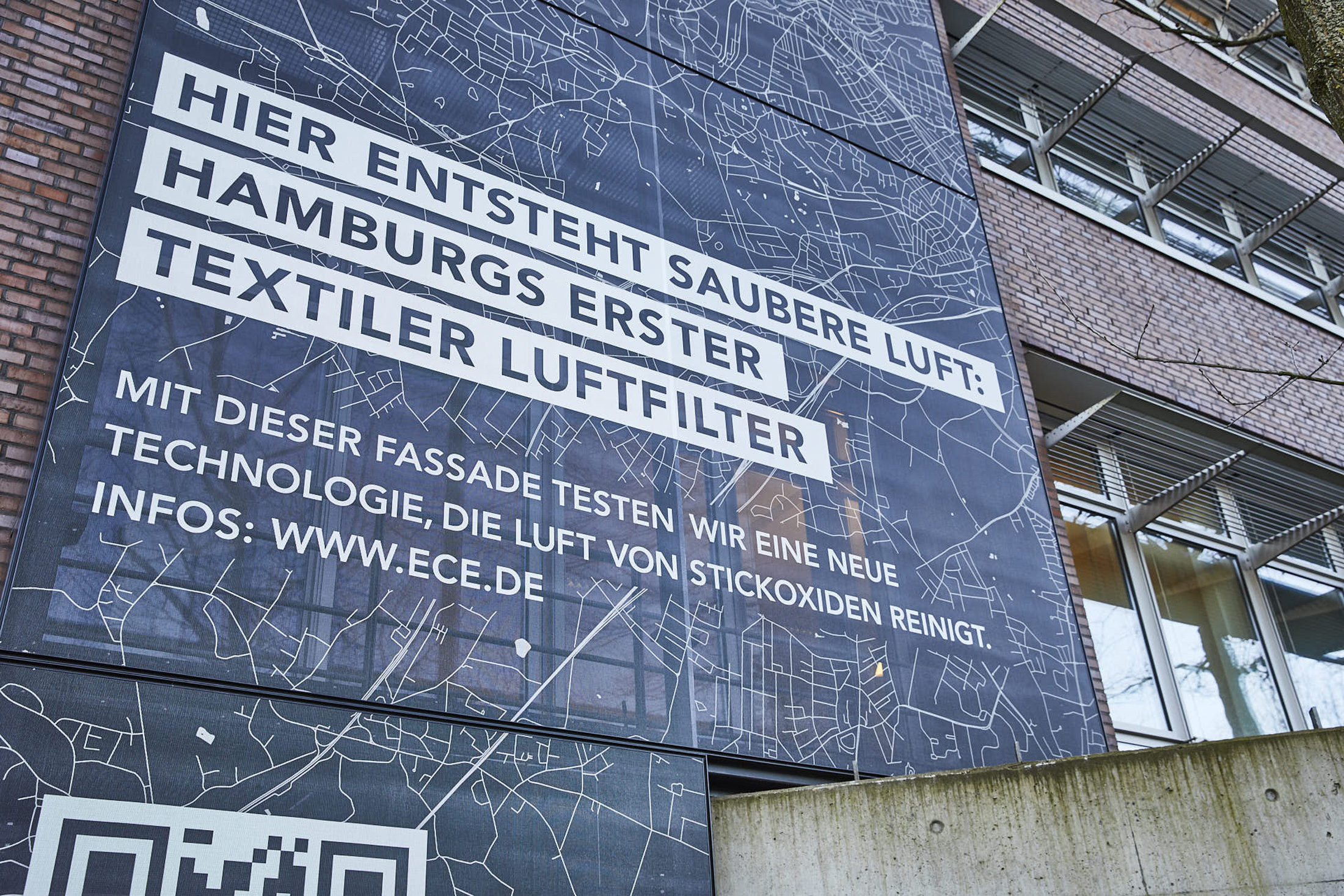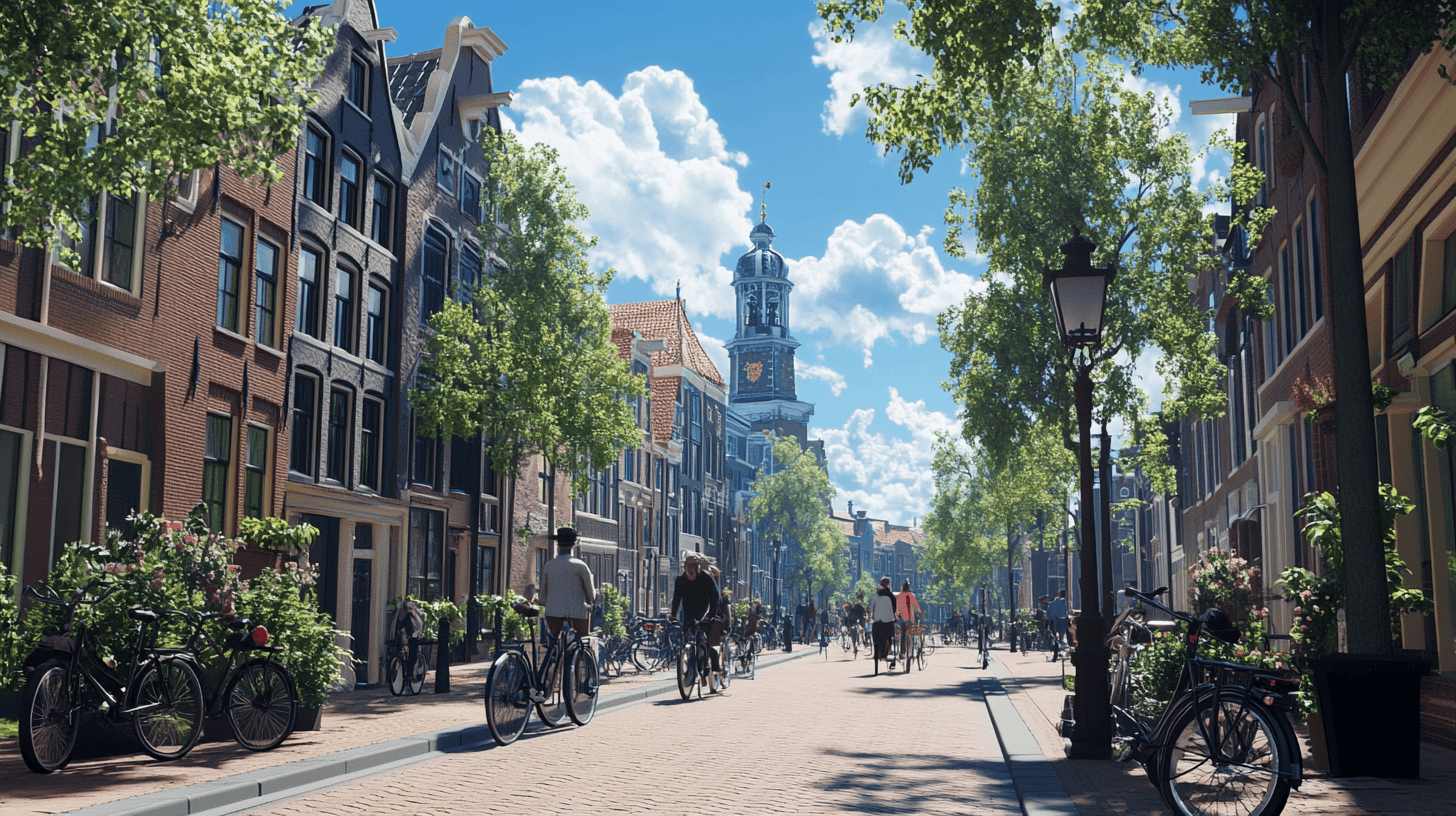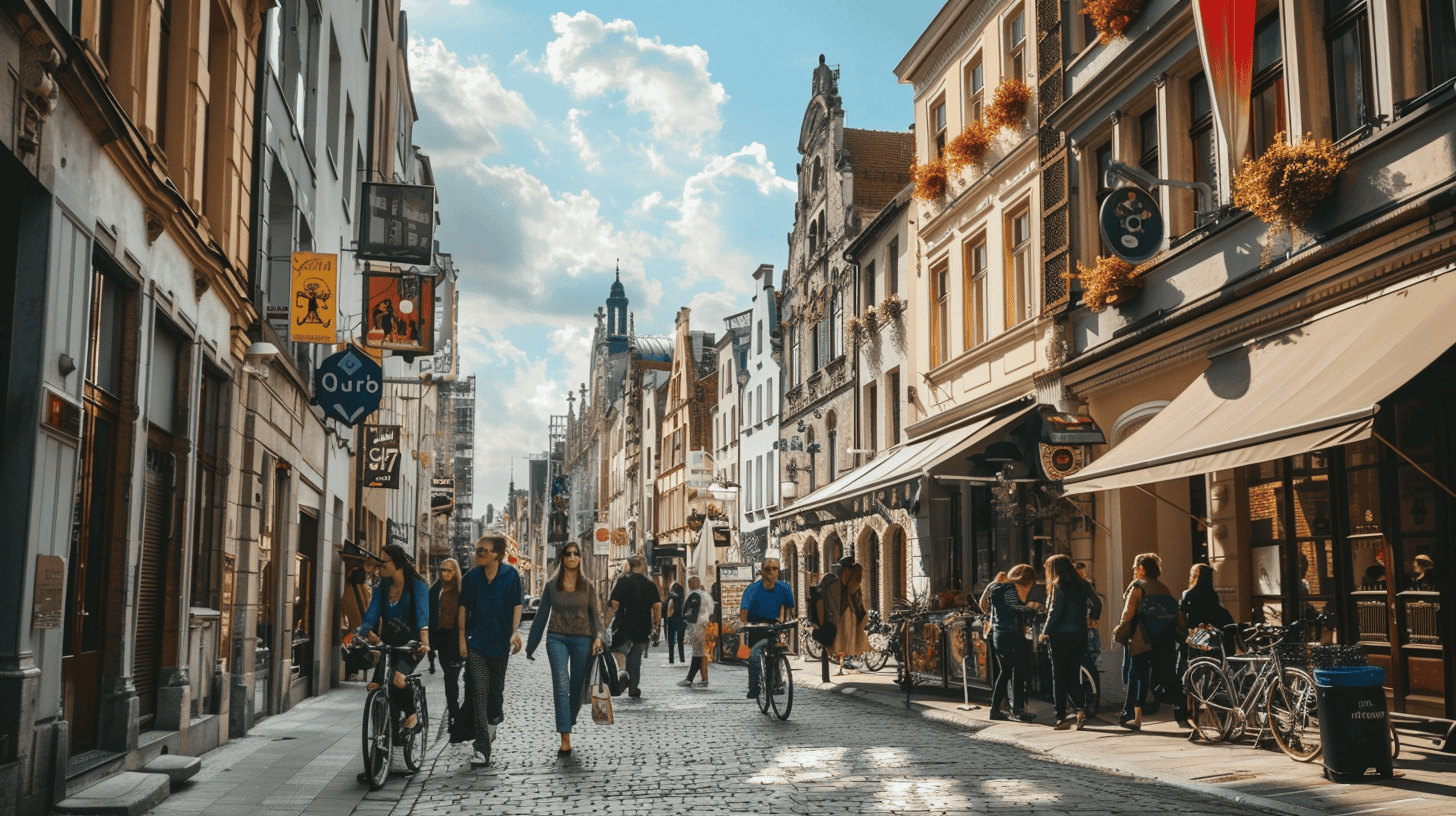
The city of Santiago de Chile with its seven million inhabitants suffers from massive air pollution in winter. Architect Jan Serode completed his master’s degree there when he developed the concept for an air-purifying textile facade. The project is now being readied for the market as part of his doctorate at the Institute for Textile Technology of the Rhine-Westphalian Technical University of Applied Sciences Aachen (RWTH). The prototype has been undergoing pilot trials since February on an office building of ECE Europa Bau- und Projektmanagement company in the German city of Hamburg. The project is nearing completion.
Serode’s textile facades filter nitrogen oxides, the most significant pollutant found in the air. These are released into the atmosphere through the combustion of fossil fuels such as coal or oil. Road traffic is regarded as the main source. More than half of the nitrogen oxide emissions in Europe in 2000 were caused by traffic emissions. In the following interview with Innovation Origins, the doctoral student explains the principle of this novel way of filtering out harmful emissions from the air we breathe.
What are the advantages of textile facades in general?
“To date, textile facades have been used to provide protection from the sun and for aesthetic reasons. At RWTH Aachen, we are interested in textile facade systems that are placed in front of the actual building shell. This creates an air cushion between the building and the textile and a cooling effect that reduces the energy requirement for cooling in summer. In a study, a savings potential of up to 78 % was verified at an office building in Berlin.”
Also interesting: Intelligent wood could become the urban construction material of the future
“At the same time, textile facades facilitate lightweight construction. They are mounted on a metal substructure using tension frame technology and the textile facade can be installed, maintained, and dismantled in a very short time and with a minimum of effort. The scope of application is very wide-ranging. Textile facades can be used for all types of buildings – even for stadiums and parking garages. There are almost no restrictions. Moreover, they can be used on existing buildings as well as on new buildings.”

How long have you been working on textile facades and how did you come up with the idea of integrating then with an air filter for nitrogen oxides?
“I’ve been working on the idea of combining energy efficiency with design in facades since my bachelor’s degree in Berlin. In my Master’s thesis, which I completed as part of a double degree program in Berlin and Santiago de Chile, I had already developed a theoretical plan for an air-purifying building. That city suffers from enormous air pollution during the winter months. After my studies, I worked in an architectural office in Stuttgart on a competition for a building with a textile facade. We finished second in the competition only because people didn’t believe that you would be able to see outside very clearly through the textile facade.
I have just resumed research on the air-purifying textile facade as part of my doctorate at the RWTH. We also did a study with ophthalmologists.”
How can we picture this textile facade and what makes it an air filter?
“The textile facade is made of PVC-coated polyester, it has a fine mesh structure and is both permeable and transparent. The air-purifying effect is based on a coating that has a photocatalytic effect. This causes the nitrogen oxides from the city air to bind to the façade surface under UV light. There the pollutants are converted into tiny amounts of harmless salts through an oxidation process. When it rains, the salt residues are rinsed off the façade surface and returned to the natural cycle of nature. The rainwater could also be used as a fertilizer for plants. We have been taking samples to scientifically prove its environmental compatibility.”
What did the experiments with rainwater reveal?
“The experiments revealed that the conversion of nitrogen oxides also produces nitrate, which in high concentrations has a toxic effect on humans and mammals. By the same token, it is an important nutrient for plants and is therefore ideal as a fertilizer. The nitrate concentrations in rainwater are exceptionally low. In theory, you could even drink it. Together with architecture students, we have developed a number of variations to see how this type of façade system could be coupled with a landscaped facade, one with greenery, for example. We collect the rainwater and use it to irrigate plants which we integrate into the building shell. This variation also has other synergetic effects. In summer, it can reduce the environmental temperatures in cities and thereby counteract the harmful effects of urban heat islands.”
What did the study with the ophthalmologists reveal?
At present, a micro-woven mesh is used for textile facades. We have carried out studies with test subjects in which we have tested very different structures – with varying geometries and degrees of open structures. We arranged the varying geometric shapes in irregular patterns, sometimes even chaotically. But it turned out that it is easier to see through surfaces with a consistently high degree of openness in their structure, as well as a regular structure, and closely spaced structural elements. When it comes to colors, dark colors are easier to see through than lighter colors and black is easier to see through than white.
How do you check whether the textile facade actually filters the nitrogen oxides out of the air and what level of performance are you expecting?
“We have installed several digital sensors at various positions on the façade which enable live monitoring. By doing this, we measure two things: The effects on the urban space and the effects on the interior of the building. Three positions are fixed. We also use a mobile sensor for experimental testing. The sensors record a certain amount of air volume every second. We use an electric optical system to check and determine the concentration levels of pollutants in these airflows. We have already been able to detect a significant impact and will publish the results after the project is completed.”
The facade is made of recycled plastic. What were the challenges that this posed?
“We worked with recycled materials for both the fabric and the coating and are so far achieving a very good environmental balance. We decided to use recycled plastic from PET bottles because we have a thorough understanding of the composition of these materials. Originally, we wanted to use the plastic waste from the ocean. But we encountered the problem that the purity grade was quite variable. The process to retrieve very good ocean plastic is an extremely complex and laborious one.”

How should the air-purifying textile facade be brought to the market?
“The model at the Hamburg ECE complies with German building regulations and is already operational. In order to make the technology available as soon as possible, we have to start manufacturing quantities quickly. We are trying to meet this challenge as part of a large-scale consortium at the RWTH. Several institutes and industrial partners are involved in this. We are always open to new partners joining us as well. Everyone who is motivated to work in this field is welcome.”
Research is still underway into other technologies for textile facades. What features do these have and what do these applications look like?
“The consortium is currently in the process of being set up. In the meantime, more than eight institutes at the RWTH and one institute at the Jülich Research Center (Germany, ed.) are participating in the conception and are undertaking a variety of tasks. The technological variants that we are currently exploring are the integration of air purification, lighting fixtures, and photovoltaics – as a means of supplying the building with energy. We are currently at the stage of a functioning prototype for all three variants. Parallel to this, we have an innovation laboratory in which we are constantly thinking about future possibilities with the students there and have already tested several advanced variants.”
What function does the illuminated textile facade have?
“We use different variants. In one variant, we have incorporated a concrete visual image from the outset, which is lit up in the dark. This could be a sign or even a company logo. In another variant, LED is integrated and the textile façade becomes a media facade on which it is possible to play custom content. Advertising is also an option. The careful integration of advertising could make these new types of facades financially viable. However, it is important to take a critical look at what this means for the cityscape right from the start. But this approach ought to be feasible at airports or stadiums.”
Thank you for this interview.
The project partners from industry:
ECE Europa Bau- und Projektmanagement GmbH in Hamburg
Also interesting:
Shower water is ideal for growing your own food
Buildings fitted with stylish & sustainable solar panel facades







